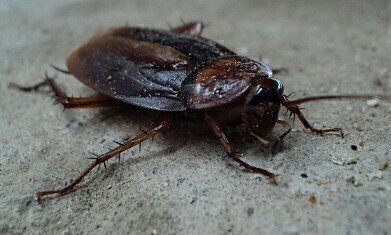Chromatography
What Are The 6 Types of Disgust?
Jul 03 2018
It's no secret that natural instincts play an important role in keeping animals alive. Now, a new study from the London School of Hygiene & Tropical Medicine (LSHTM) has explored how disgust, one of the most powerful innate behavioural patterns, helps protect humans from disease.
The study explored the idea that the human emotion of disgust is built around people, practices and objects that present a risk of disease. It's the first time researchers have used the framework of disease to break down the emotion of disgust into different categories, with the team asserting the findings could have positive connotations for public health messaging and help provide new insights into the triggers and motivations of disease avoidance behaviour.
The human "disgust" drive
The study surveyed more than 2,500 people and asked them to asses 75 potentially "disgusting" scenarios, including infected wounds, rotten food, public defecation and objects teeming with insects. After rating the strength of each individual disgust response, the researchers found that infected wounds were the most offensive scenario, closely followed by violation of hygiene norms such as not washing the hands after using the bathroom.
The team were able to divide the responses into six different categories, each linked to regularly occurring types of infectious diseases that have posed a threat since ancestral times. Here's a glimpse at each category and its "disgusting" connotations:
- Hygiene – displays or physical evidence of poor hygiene
- Animals/insects – disease carrying "vermin" such as mice and mosquitoes
- Sex – promiscuous sexual activities linked to spreading STDs
- Atypical appearance – infections, abnormal body shapes and deformities, as well as symptoms of sickness such as coughing
- Lesions: signs of infected wounds such as blisters, boils and pus
- Food: edibles that show signs of spoilage such as mould and maggots
Confirming the "parasite avoidance theory"
Professor Val Curtis, senior author at LSHTM explains the findings confirm the "parasite avoidance theory" which hypothesises that the emotion of disgust evolved in animals and played a pivotal part in encouraging them to adopt healthy behaviours. This pattern is clearly replicated in humans, with disgust often dictating behaviours designed to minimise the risk of catching diseases.
"Although we knew the emotion of disgust was good for us, here we've been able to build on that, showing that disgust is structured, recognising and responding to infection threats to protect us, says Curtis. "This type of disease avoidance behaviour is increasingly evident in animals, and so leads us to believe it is evolutionarily very ancient."
Micheal de Barra, co-leader of the study agress, stating "Although we only really came to understand how diseases transmit in the 19th century, it's clear from these results that people have an intuitive sense of what to avoid in their environment. Our long coevolution with disease has 'wired in' this intuitive sense of what can cause infection."
Today, next-generation technology plays an important role in protecting humans against disease. For a closer look at the latest developments don't miss 'Monitoring Airborne Molecular Contamination in Indoor Cleanroom Air'.
Digital Edition
Lab Asia 31.2 April 2024
April 2024
In This Edition Chromatography Articles - Approaches to troubleshooting an SPE method for the analysis of oligonucleotides (pt i) - High-precision liquid flow processes demand full fluidic c...
View all digital editions
Events
Apr 22 2024 Marrakech, Morroco
Making Pharmaceuticals Exhibition & Conference
Apr 23 2024 Coventry, UK
Apr 23 2024 Kintex, South Korea
Apr 23 2024 Seoul, South Korea
Apr 24 2024 Jakarta, Indonesia




.jpg)













